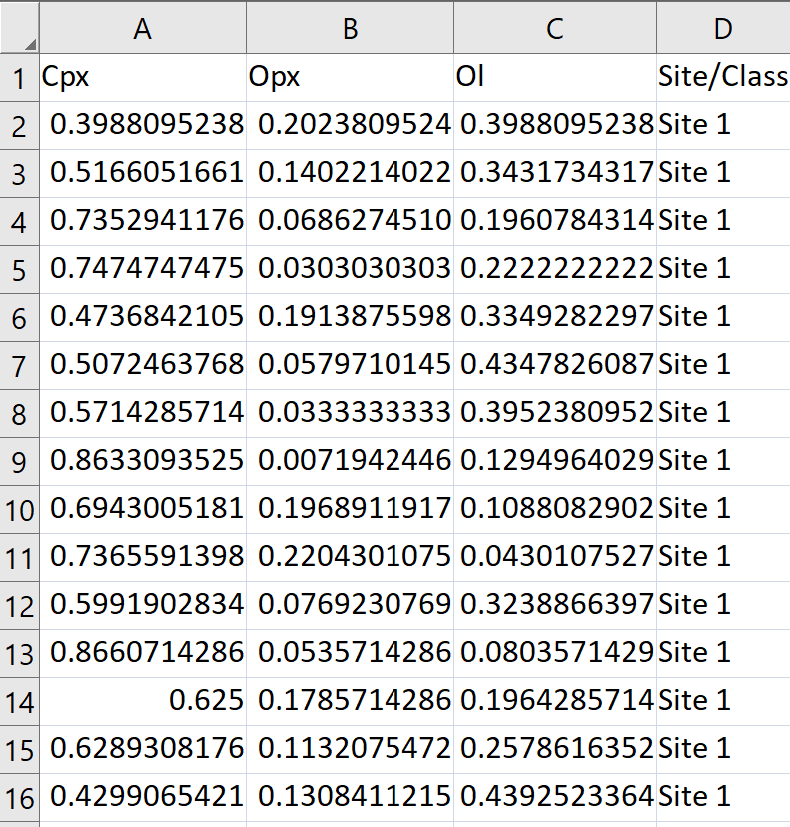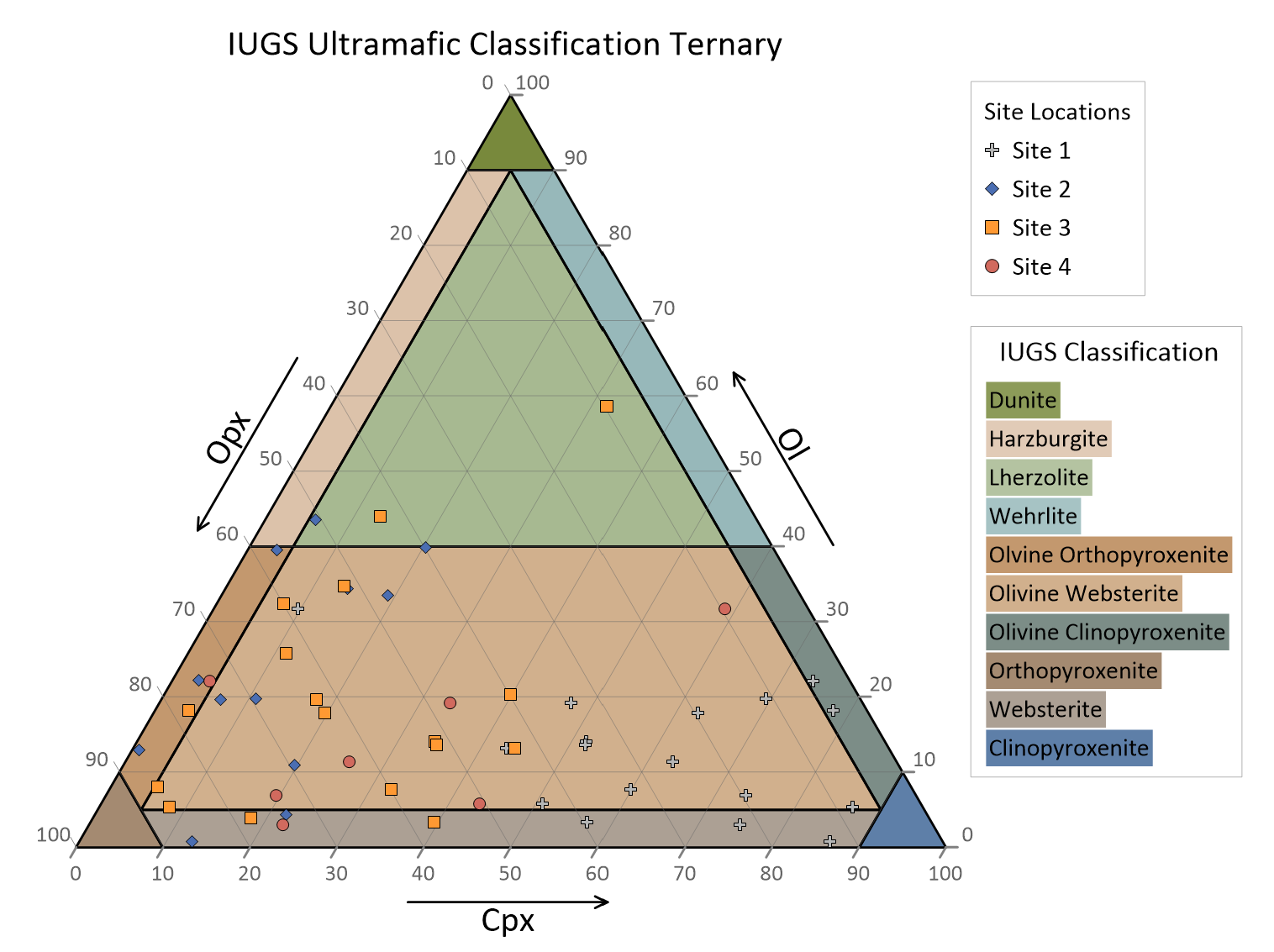This template displays an IUGS ultramafic classification ternary diagram, a trilinear plot used to classify ultramafic rocks based on the relative proportions of olivine (Ol), clinopyroxene (Cpx), and orthopyroxene (Opx). Each data point represents a sample plotted by its modal mineralogy, with fields shaded according to IUGS classification boundaries (e.g., dunite, harzburgite, lherzolite, wehrlite). The ternary framework provides a clear visual reference for distinguishing between rock types and assessing mineralogical trends across sites or regions.
These ternary diagrams are widely used in petrology, geology, and geochemistry to interpret igneous and metamorphic processes, compare field or thin-section data to classification standards, and communicate results in research publications or technical reports.
The template includes two legends: one for sample site locations and one for IUGS classification fields. Users can easily turn on/off classification boundaries, labels, colors, and legends in the Object Manager to adapt the figure for specific datasets or reporting requirements, and to customize to achieve the exact look they are after.
Industry Focus: Geochemistry, Geology, Mineralogy, Petrology
Graph Features: Class, Scatter, Ternary
Instructions
To use this template in Grapher:
- For the best experience, structure your data in the same format shown on this page or use the example files if provided above.
- Click Download Template at the top of this page to download a GRT template file.
- In Grapher, click File | Open and open the file.
- Click Template | Populate Template to load your own data into the template.
Data Layout

Primary Categories: Categorical, Comparison, Distributive
Industry Focuses: Geochemistry, Geology
Type: Class, Scatter, Ternary
